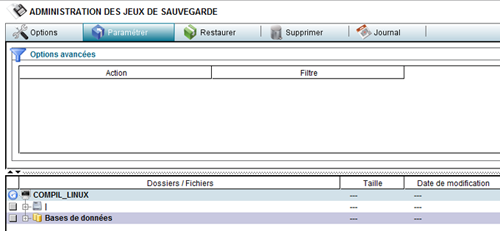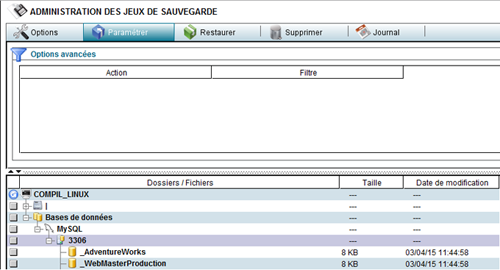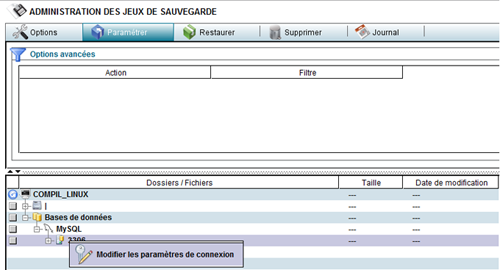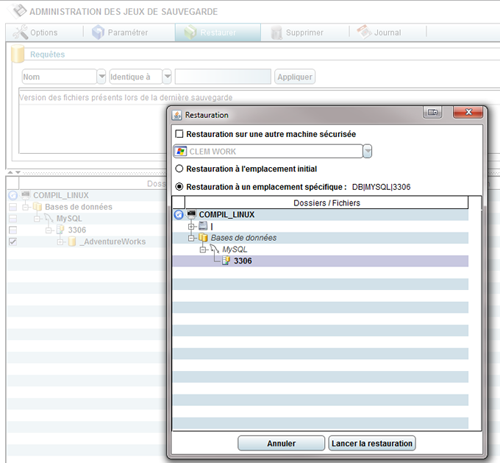A few months ago, Beemo developed the SQL plugin to facilitate the backup and restoration of databases. Until now only available for SQL Server databases, this plugin now includes backup of all MySQL versions under Linux.
The MySQL Linux-compatible SQL plugin is now available on request and will be rolled out to the entire Beemo estate shortly.
Detection, display and selection of databases
The MySQL Linux compatible SQL plugin allows Beemo to detect whether MySQL is installed on the client machine. If this is the case, the “Databases” node will appear in the “Set up” view of the administration interface of your backup sets :

By deploying the different nodes under “Databases”, you will be able to see the MySQL engine, then the different MySQL instances detected on the machine and finally the databases of each instance :

It is then possible to select any node to set up the backup :
- of all the machine’s databases,
- of all MySQL databases on the machine,
- of all MySQL databases on the 3306 instance of the machine,
- of one or more specifically selected databases.
The MySQL Linux compatible SQL plugin improves the backup process when selecting items to backup. It is sufficient to directly select the database(s) you wish to save and not each file that makes up a database, as was previously the case.
Setting up the connection to a MySQL instance
When the MySQL instance node unwinds, an attempt is made to connect to the database engine.
Two types of connection exist :
- an automatic login, set by default, without a username and password,
- a standard login with username and password. It is possible to change the type of connection from automatic to standard by specifying it via a menu provided for this purpose. This appears when you right-click on the line of the instance.

Once the parameters have been entered, a connection attempt will be made to inform you of the validity of the connection.
Backing up and restoring a database
Once the scope of the backup has been defined, the databases can be hot backed up. Attention, MySQL can use several table engines (such as InnoDB, MyISAM, Archive, NDB…) which have different behaviours. If the backup involves databases that contain tables that are not in InnoDB or NDB format, writes to these databases will be blocked during the backup to ensure data integrity.
At the time of restoration, it will be possible to select a version of the backed up database to restore, either :
- to its original location, which will overwrite the database if one already exists,
- at a specific location of your choice :
– in a folder on the hard disk,
– in a MySQL instance. The restored database will be named with the date and time of restoration and will not overwrite any existing database.

Currently available on Linux, the SQL plugin will be available on Windows in early May. The SQL plugin functionality will also be available for Oracle and PostgreSQL databases.
Other developments include the introduction of differential backup, transaction log backup, and Point In Time Recovery (PITR), which allows databases to be restored to their original state.






